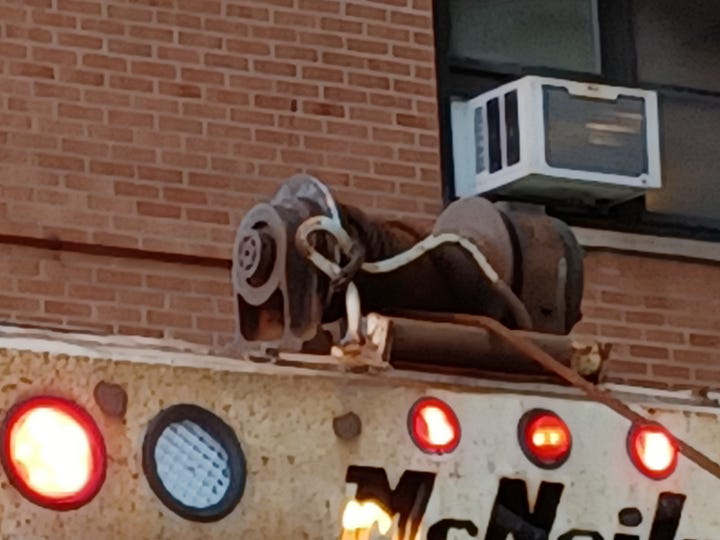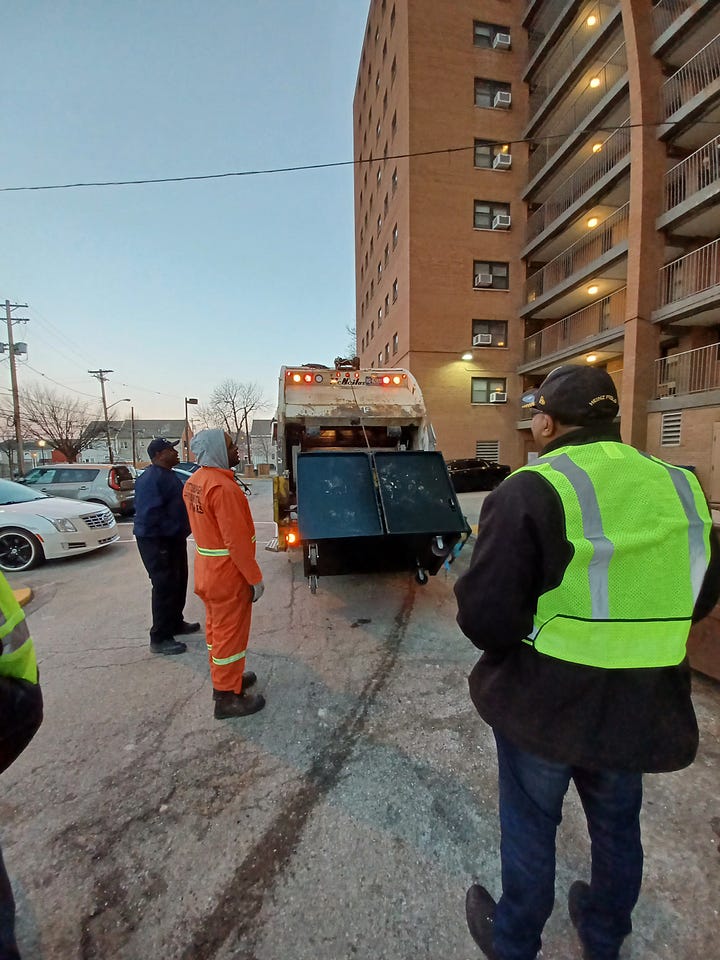Case Study: Pursuing Perfect Worker Safety in the Department of Public Works
Learning From and Preventing Everyday Incidents
One of the goals for this newsletter is to share stories of our work with local leaders. This case study highlights how we helped the City of Pittsburgh, starting in the Department of Public Works, to use the lens of safety to build systems to solve hundreds of risky and wasteful problems.
Case Study: Pursuing Perfect Worker Safety in the Department of Public Works
Learning From and Preventing Everyday Incidents
Mayor Gainey started his 2022 term prioritizing learning to lead, focusing on continual improvement across all City departments and services. Partnering with Pittsburgh Futures Collaborative, he began by observing work with a team collecting refuse in the Department of Public Works (DPW). Following a garbage truck on February 28 at 6:30 am, the team reached a full dumpster weighing more than 3,000 pounds. When they went to lift the dumpster with the truck’s winch, the cable tangled, seizing up with the dumpster hanging midair. On a time crunch, DPW employees tried to shake them free, risking death or serious injury to finish the job quickly. The foreman brought in a front loader to safely lift the garbage into the truck, returning the dumpster to the ground. With the mayor’s team onsite to ask “Why?” it was revealed that this happened several times a month, putting employees’ safety at risk and costing the city $2,000 to $4,000 per repair.


Using Root Cause Problem Solving to Prevent Risk Cost
Using safety as a lens to view a broken process, Mayor Gainey and the DPW team took a step back and asked, “Why?” Why was the winch repeatedly getting stuck? Without a leader focused on creating an excellent organization onsite, everyone would have just gone about their business, putting themselves in harm’s way and repeatedly creating costly repairs.
With Pittsburgh Futures Collaborative's support, an immediate investigation revealed there was no standard practice for coiling and uncoiling the winch, leading to tangles and freezing. However, the Mayor and his team pinpointed one DPW employee who never had this issue with the winch on his truck. Pittsburgh Future Collaborative helped DPW record a simple 30-second video of his process, and “in less than 24 hours, they created a check process for all the winch cables before they go out on every shift, and they train everybody how to do this,” explained Geoff Webster, Chair & Senior Advisor at the Pittsburgh Futures Collaborative.
The Safety System Solves This Problem, and More
“Pittsburgh Futures Collaborative united everyone from the beginning. They were able to bring in a framework that helped establish new practices, ” said Chris Hornstein, Director of Public Works. “They were able to bring in tools to help us understand the systems we were working with, which was critical.”
DPW employees are safer on the job, fewer trucks are out of commission for repair, and less money is going towards repairs. Through the lens of safety, the City of Pittsburgh team identified what needed to be solved to prevent employee injury, saving money and time on unnecessary repairs.
This story is just one example of how the process of looking at the root cause has been deployed in over a thousand additional events over the last 30 months:
This single story is just one example of a system that has been applied more than a thousand times across the City workforce over the past 30 months—driving continuous improvement, preventing harm, and transforming how Pittsburgh operates. The results speak for themselves:
Reducing harm to employees by over 30% across the City Workforce
Preventing over 200 harm events requiring medical attention
Saving nearly $10 million in worker’s compensation costs



